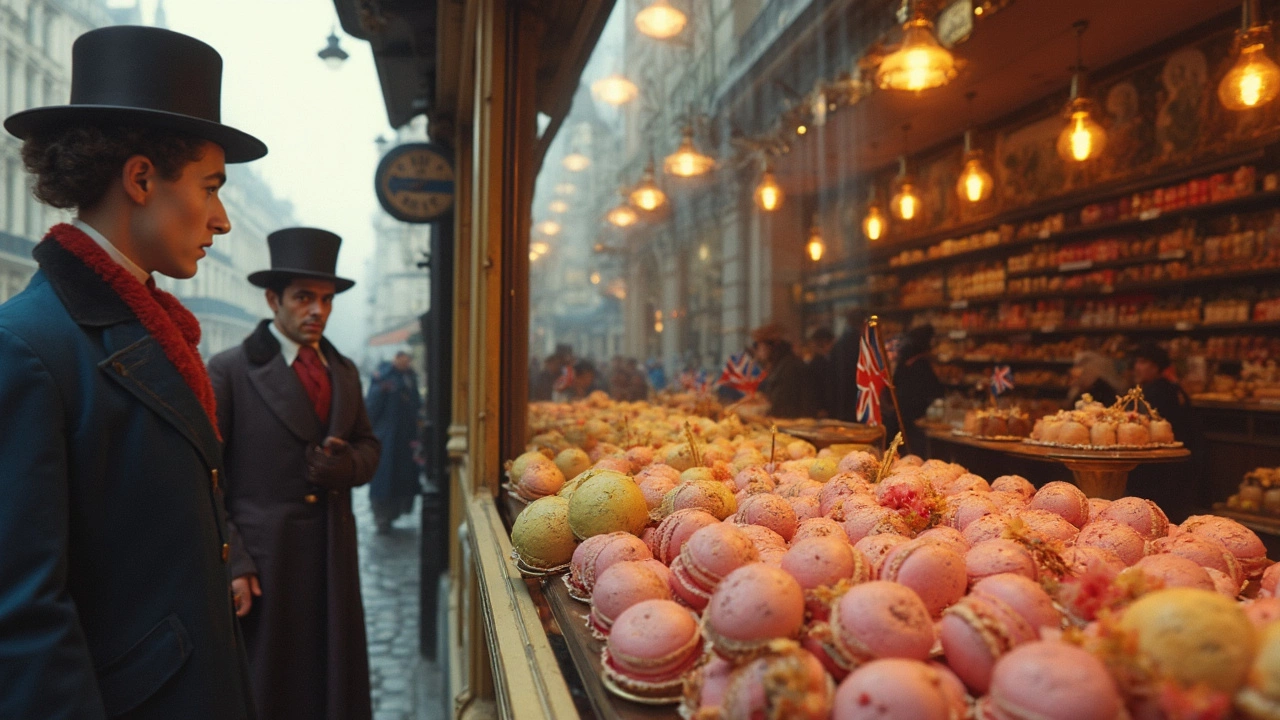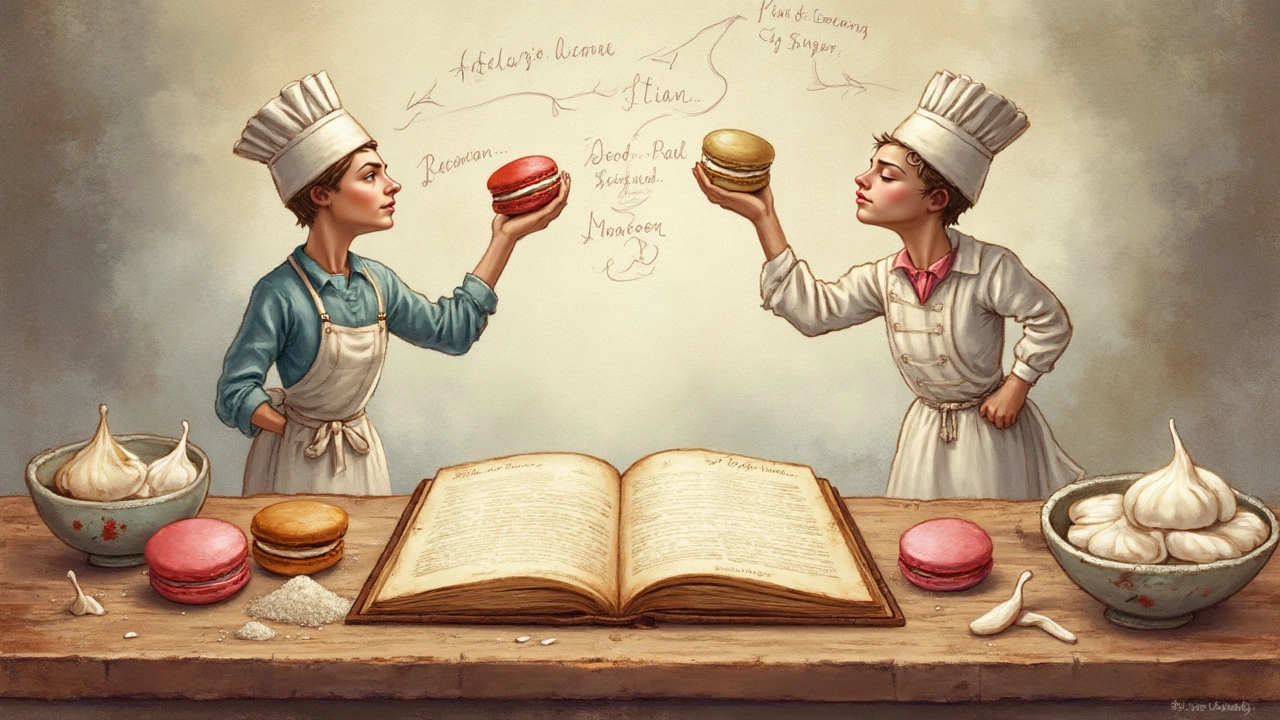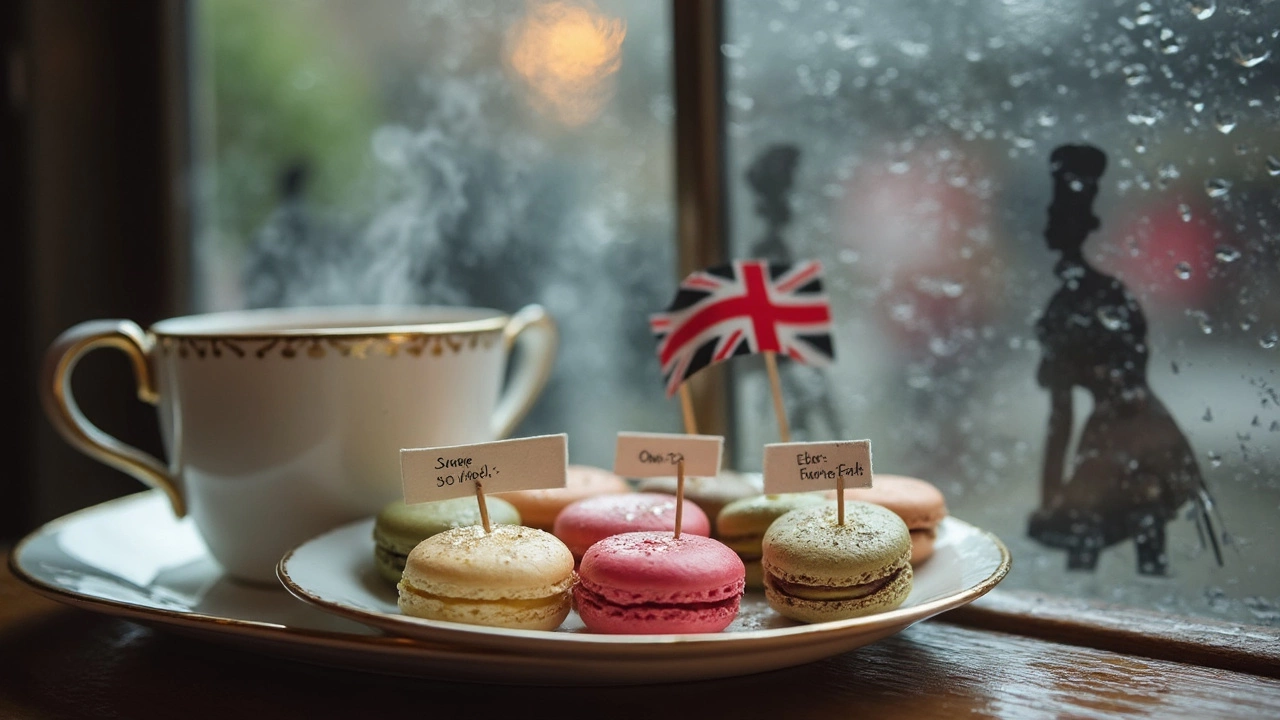
Ever stared at a macaron and wondered, "Why that name?" You're not alone. These colorful, delicate cookies have a fancy vibe, but the story behind their name is down-to-earth and pretty cool once you dig in.
First things first: ‘macaron’ isn’t just a random French-sounding word. There’s a bit of history and even a hint of old-school kitchen science baked right in. People mix them up with macaroons, but trust me, the spelling isn’t just a typo—it’s a whole different snack and story.
If you love trivia or just want to sound like you know your stuff at a bakery, keep reading. There’s more to these treats than meets the eye, including just why they’re not called “almond-meringue sandwiches” or something even stranger.
- What Does 'Macaron' Mean Anyway?
- Where Did the Name Come From?
- Macaron vs. Macaroon: The Language Mix-Up
- Macarons Through the Ages
- Tips for Talking and Buying Like a Pro
What Does 'Macaron' Mean Anyway?
Most folks think of a macaron as just a cute French dessert, but the name actually goes way back. It's rooted in the Italian word 'maccarone' or 'maccherone,' which just means 'paste.' That’s a shoutout to how ground almonds—yes, paste—are the heart of a true macaron.
The French kept the Italian sound but put their own spin on it, and that’s how we got the word we use today. So, when you bite into a macaron, you’re literally biting into a bit of history, all about almond paste and kitchen creativity from centuries ago.
If you ever feel fancy saying 'macaron,' it’s just language playing tricks on us. The treat is simple at its core: two almond meringue cookies sandwiched with a tasty filling. There’s no extra sugar coating to the name. It comes straight from the ingredient list.
- The key flavor in a macaron? Almonds, always.
- True macarons use just a few basics: almond flour, egg whites, and sugar.
- The word 'macaron' is exactly why you’ll hear people passionate about not mixing it up with coconut macaroons.
No complicated meaning, no secret code. That’s the story behind the name—and the reason you can sound like a pro when you walk into a bakery and order with total confidence.
Where Did the Name Come From?
The macaron name has a way more interesting backstory than most of us expect from a sweet treat. It originally comes from the Italian word “maccherone,” which is related to—yep—pasta. Way back in the 1500s, when Catherine de Medici married into French royalty, she brought Italian chefs with her to France. Instead of just pasta, these chefs made little almond-based goodies called “maccheroni.”
The name stuck but went through a French makeover. Italians were already using ground almonds, sugar, and egg whites to make a chewy cookie. When the recipe hit France, the French put their own spin on it, but kept a version of the name—so "maccherone" became "macaron."
Here’s a quick breakdown of how it happened:
- The word starts in Italy (maccherone), meaning fine dough or paste.
- Italian bakers used a paste of almonds, sugar, and egg whites.
- Catherine de Medici's chefs brought over the idea to France in the 16th century.
- The French adapted both the recipe and the name, turning it into macaron.
And just like that, the macaron became part of French dessert culture. By the 1800s, bakers in Paris had started sandwiching ganache or jam between two cookies, making the modern macaron we all know now.
If you visit a pastry shop anywhere in France, you’ll spot the word "macaron" everywhere. Fun fact: not all regions make them the same way. Some places in France still bake the single-cookie variety—crunchy outside, chewy inside—with no filling at all!

Macaron vs. Macaroon: The Language Mix-Up
Alright, this is where lots of people get stuck. They see the soft, colorful French macaron lined up in pastry shops, but then walk into a local café and spot “macaroons”—the thick, coconut-loaded cookies. Same thing? Nope. Totally different treats, surprisingly tangled up by language slip-ups and history.
The confusion really boils down to just one extra “o.” In French, “macaron” means the classic almond meringue sandwich—crisp outside, soft inside. The macaroon got popular in English-speaking countries, but it’s usually baked with shredded coconut and looks nothing like its French cousin. The texture, ingredients, and even the taste are completely different.
- Macaron: Made with almond flour, egg whites, and powdered sugar. Famous for pastel colors and smooth tops.
- Macaroon: Built with egg whites, sugar, and (usually) lots of shredded coconut. They’re rough, chewy, and sometimes dipped in chocolate.
If you’re still wondering why the names are so similar, here’s the twist: Both words actually come from the same Italian origin, “maccarone” or “maccherone,” which pointed to any kind of paste or dough. But as recipes and languages spread through Europe, the treats and names drifted apart.
| Macaron | Macaroon | |
|---|---|---|
| Main Ingredient | Almond flour | Coconut |
| Texture | Crispy shell, chewy inside | Chewy |
| Country of Origin | France, from Italy | Italy, popular in US/UK |
| Looks | Smooth, round, sandwich style | Rough, chunky, mound-like |
If you want to avoid bakery embarrassment, just remember: macaron (with one "o") is that cute, colorful French cookie. Macaroon (with two "o's") is the toasted coconut number. People in the know even say ‘mac-ah-ron’ with a light French accent if they’re feeling fancy, but honestly, knowing the difference already puts you ahead of the game.
Macarons Through the Ages
These cute desserts didn’t actually start out looking like what you see in French bakeries today. The macaron gets its roots from Italy, way back in the 1500s. Historians usually credit Caterina de’ Medici, who brought her Italian pastry chefs to France when she married King Henry II. Back then, the treat was a simple almond-based cookie without any filling. Think less Instagrammable, more rustic snack.
By the late 1700s, French nuns in Nancy started baking macarons to make money during tough times. Their version was still single-layered—just a chewy, sweet round made from almonds, sugar, and egg whites. The double-decker cookie sandwich with creamy filling? That didn’t pop up until nearly the 20th century, thanks to Pierre Desfontaines at Ladurée, a legendary Paris bakery. He’s the guy who first paired two shells with ganache or buttercream in between, creating the famous French dessert we now recognize.
Macarons became a full-on rage in Paris in the 2000s, thanks to famous shops like Ladurée and Pierre Hermé playing around with colors, flavors, and fillings. Just in France today, bakeries sell millions of macarons each year, and they’re always coming up with wild new versions—think matcha, salted caramel, or even cheeseburger-inspired macarons. If you want to know what’s trending, just peek in a fancy bakery window.
Take a peek at a few key moments in the macaron timeline:
- c. 1500s: Italian monks and nuns make almond cookies
- 1533: Desserts brought to France by Catherine de’ Medici
- Late 1700s: French nuns in Nancy bake macarons as simple single rounds
- Early 1900s: Ladurée invents the filled double-shell version
- 2000s: Macarons boom worldwide, with wild flavors and Instagram fame
The journey of the macaron is about as colorful as the desserts themselves. It went from an Italian monastery treat to a global pastry superstar—proving that a good cookie never goes out of style.

Tips for Talking and Buying Like a Pro
If you want to sound like you actually know what you're talking about at the pastry counter, start with the basics. The word macaron is pronounced "mah-kah-ROHN." Forget about calling them "macaroons"—that’s a whole different coconut cookie, not an almond-based treat. A Parisian baker once joked, "If you want a macaron and ask for a macaroon, you’ll leave disappointed… and with coconut stuck in your teeth."
When you’re standing in front of those bright rows at a patisserie, don’t just pick by color. True French macarons have a smooth, shiny top, "feet" (those little frilly edges at the base), and when you bite in, they’re crisp on the outside but soft and chewy in the middle. Here are a few pointers to show you’re serious about your sweets:
- Check the texture. A good macaron is never soggy or rock-hard.
- Ask about flavors that use real ingredients (think pistachio paste, not artificial flavor).
- Freshness matters. Good macarons can go stale fast—so find out if they’re made daily.
- If you have allergies, double-check. Almond flour is the base here, not regular wheat flour.
Curious about the French obsession? The city of Paris alone has more than 600 specialty shops for macarons. Here’s a little stat on popular flavors, based on a 2023 Paris survey:
| Flavor | Popularity (%) |
|---|---|
| Raspberry | 27 |
| Pistachio | 22 |
| Chocolate | 19 |
| Vanilla | 16 |
| Salted Caramel | 8 |
Don’t be shy about asking questions. Staff at real French bakeries love sharing their favorites and giving you the lowdown. And remember, the fancier the packaging, the higher the price tag—so if you just want a few classics, skip the gift box and buy a couple loose to try them out.
One last tip: if you want to impress someone in conversation, drop this line from Pierre Hermé, the so-called "Picasso of Pastry":
“A macaron is more than a cookie—it’s architecture, it’s texture, it’s adventure in two bites.”
Knowing a few insider points helps you stand out. Next time you pick out a macaron, you’ll look and sound the part—no confusion, just confidence.